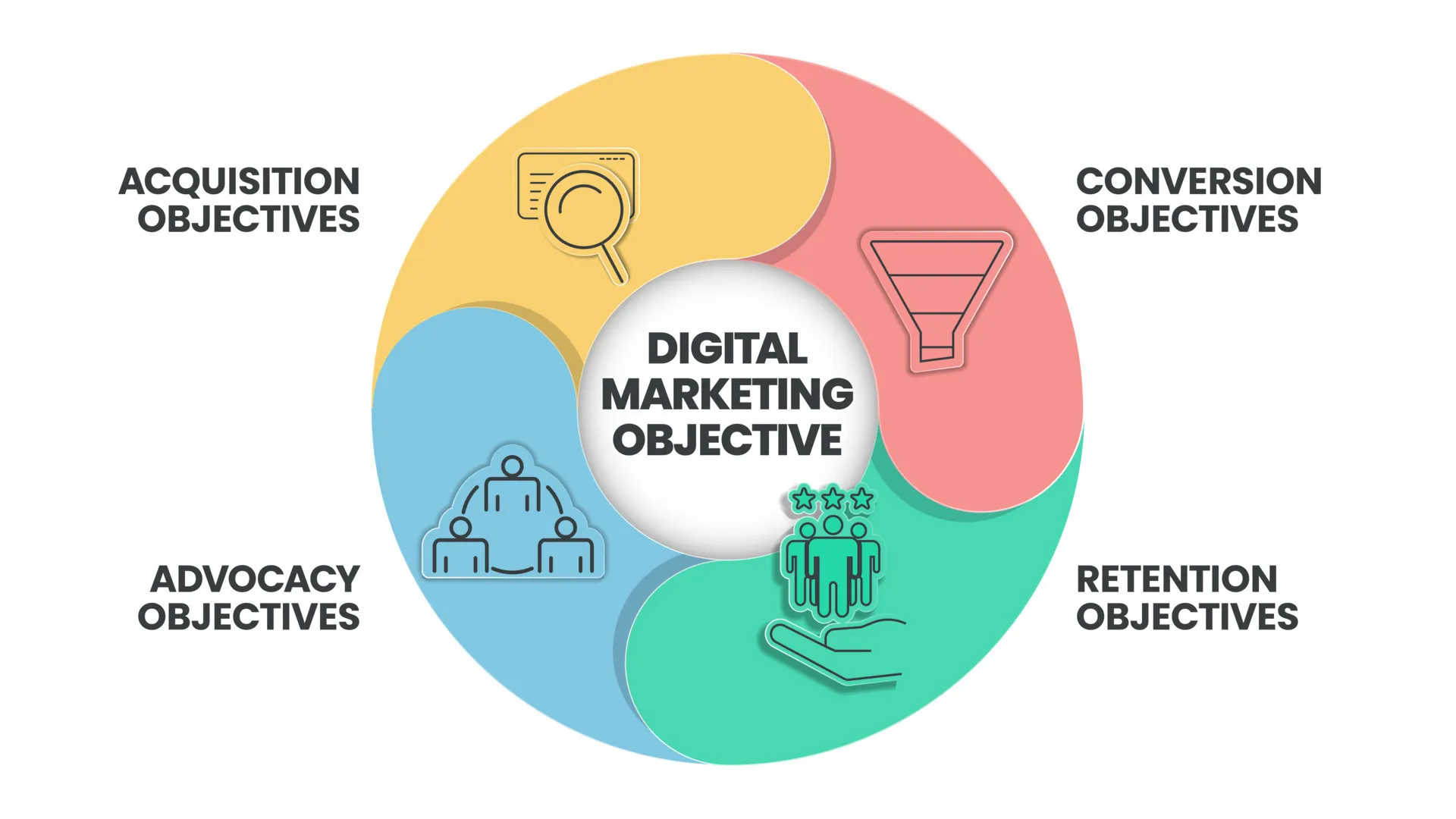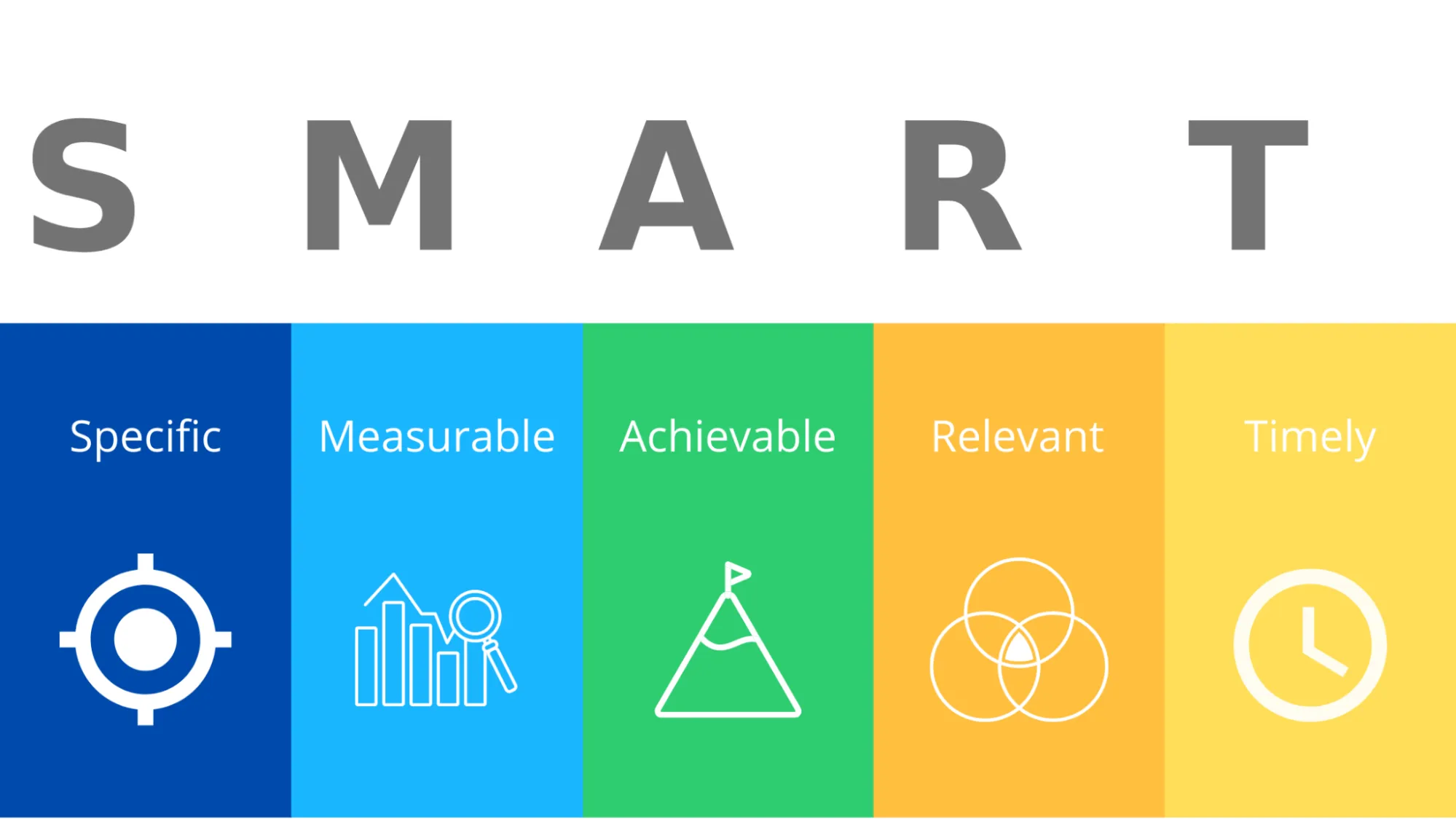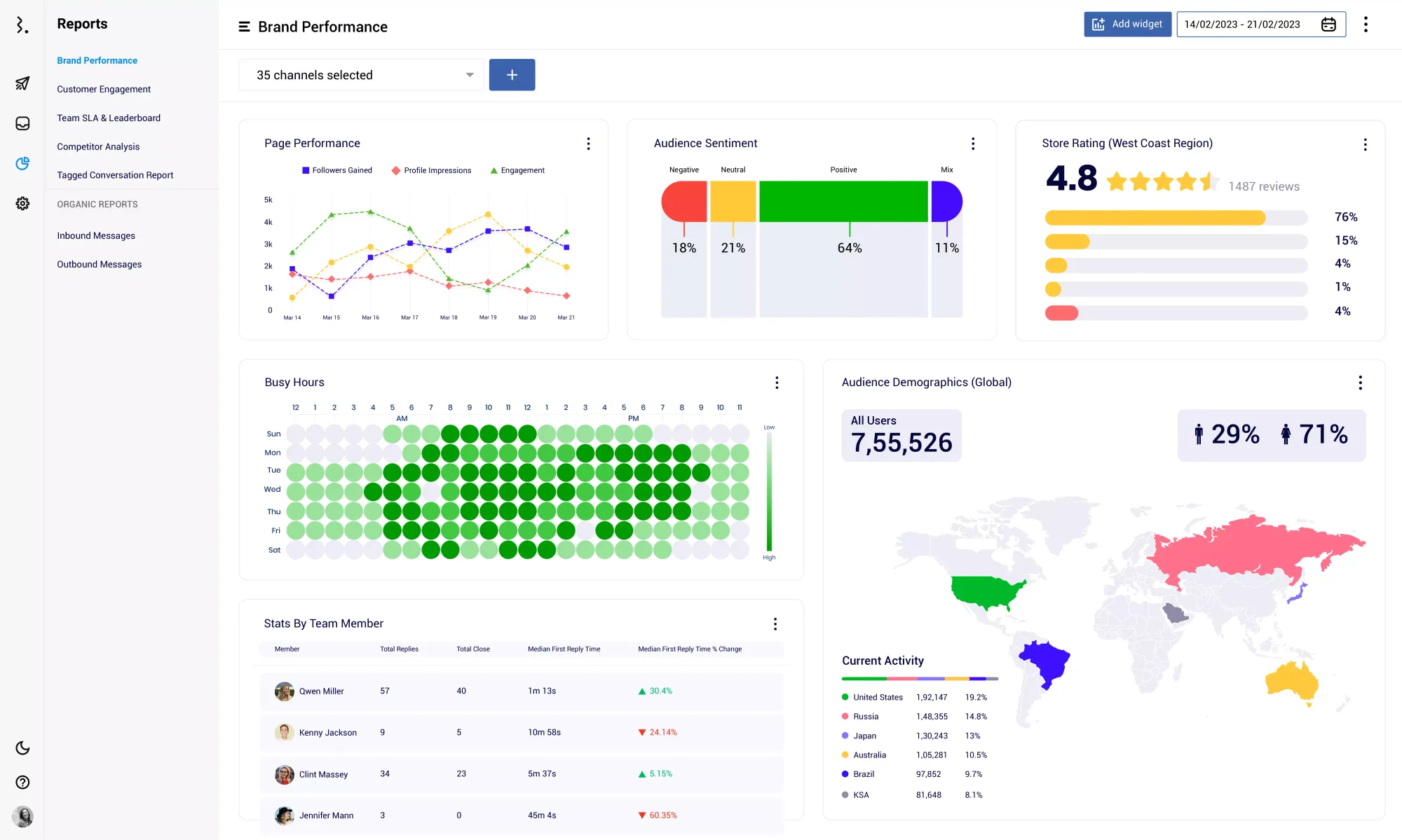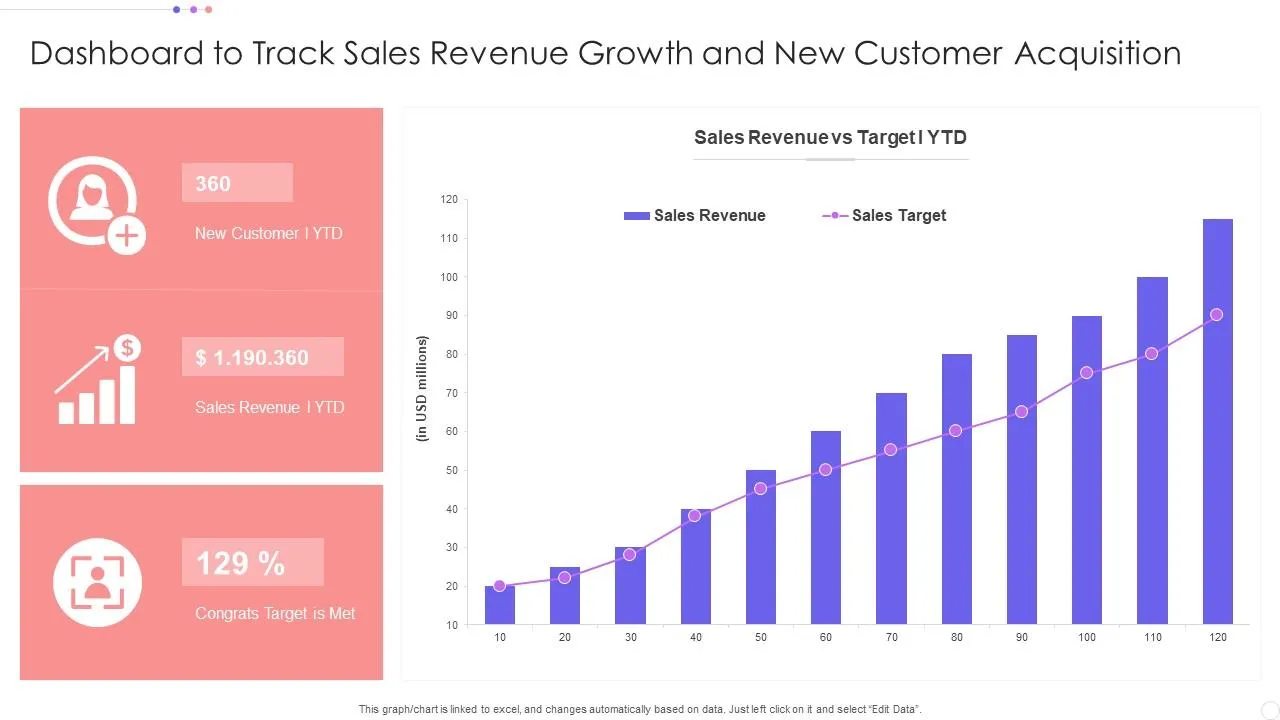For small businesses, there are many marketing options available today.
You've got social media, email campaigns, and blogging, just to name a few.
And there are even more ways to reach modern customers.
But as a small business, your marketing budget might be limited.
Choosing the right marketing channels can be tough.
So, what do you now? Don't rush into marketing.
Before you start any marketing campaigns, figure out your goals first.
Sometimes, businesses jump into marketing without a clear plan.
By setting your marketing objectives first, you can focus on campaigns that really matter.
This guide explains all about marketing objectives and how to set them, including:
Table Of Contents:
- What Is A Marketing Objective?
- What's The Difference Between A Marketing Strategy And A Marketing Objective?
- How To Define Marketing Objectives?
- Marketing Objectives Examples
- KPIs To Track Your Marketing Objectives Progress
- Final Words
You can directly jump to a section of your choice or keep scrolling.
What Is A Marketing Objective?
Marketing objectives consider all parts of the company affected by them. Like, you might need accounting for the budget, get customer service to know new rules, or help sales teams reach goals. These objectives support the company's mission.
A solid marketing objective helps you succeed. Goals show where to improve and prove your success. Without goals, it's tough to see what's wrong or know you are doing well.

Source: Vecteezy
What's The Difference Between A Marketing Strategy And A Marketing Objective?
Marketing objectives lead to marketing strategies. Marketing teams create objectives, while strategies involve many teams.
A strategy is a detailed plan for reaching the objective through ads and promotions.
Here's a timeline of how an objective leads to a strategy:
- Objective: Company A wants to promote its brand by launching a new soda flavor.
- Goal: Reach 1,000 potential customers with a 10% conversion rate.
- Strategy: Make a contest to name the new flavor. All teams work together to decide rules, prizes, and ads that work best.
Recommended read: Best Sprout Social Competitors
How To Define Marketing Objectives?
Marketing objectives fall into four main categories for business growth:
Determine The Primary Objective
After you know which category to focus on, create a clear objective. For instance, you aim to promote your brand for more interest. Or if an old product isn't selling well, you could work on bringing it back, especially if it fits a trend. Always check if the objective matches your company's mission stated in the vision.
Define The Achievement
Usually, a big objective lets you set specific goals with milestones to measure success. The objective shows what you want, and the goals and plans fill in the details like who, why, how, what, and where.
Examples of specific yet broad objectives are:
- Profit: Make 15% more money.
- Growth: Get more customers to come back.
- Market Share: Double 18-35 year old customers.
- Promotion: Start selling a new product or service.
Set SMART Goals
After you have your objective, you need specific goals to know where you are going and how to measure success. Goals keep things on track and show the team what they need to achieve. Make sure your goals follow SMART principles:
- Specific: Goals need a clear purpose and a measurable result. For example, increase profit margin by 5% in six months.
- Measurable: You should be able to measure the impact of the goal, like how the profit margin change is measured.
- Achievable: Set a timeline that's realistic so teams can meet it and succeed.
- Relevant: Goals should match the objective. If you want more profit, aim to increase the profit margin.
- Time-bound: Have a reasonable end date for your goals.
SMART goals can also be adjusted as things progress.

Source: Filestage
Set Measurements
You need metrics to see if a strategy has worked or worked before. Past data helps set new marketing objectives and learn from old strategies. This helps spot strengths and avoid mistakes. We will talk more about measurements and KPIs soon.

Marketing Objectives Examples
Objective: Get more people to visit the website and buy products online
To get more visitors, teams look at what they are doing now and check their competitors. They need to set goals to increase visitors, like:
- Try a new way to bring in visitors every month.
- Make website visits go up by 3% by the end of the third quarter.
- Have 25% fewer people leave without buying.
Example: GoPro, a company that makes adventure cameras, wanted to get more customers and sell more online. They challenged customers to make short videos to share on their site. After the videos are up, GoPro adds their logo and shares them on social media. This brings more people to the website. Cool videos from customers also help lower the number of abandoned shopping carts because they show how good the camera is.
Objective: Make more people know about the product
Improving product awareness means becoming a leader in the market and getting a good reputation. This works for both new companies and older ones, adding new products. Goals should aim to show off the company and its brand while thinking about the ideal customer.
- Get 1,500 people to visit the website each month without ads.
- Get each blog post shared 250 times.
Example: A local store selling sports stuff wants millennials to notice their new hiking gear. They know millennials like different ads. So, they decided to sponsor three local hiking groups and give them drinks in the first part of the year. In the next part, they make their own hiking group and give out free gear samples.
Objective: Keep the brand strong and going
Sometimes, people forget about a brand that's been around for a while. Businesses want to keep being noticed, so they run ads or deals to remind people why the brand is good.
Example: Fast food places have been around for a long time. People might ignore ads because they know a fast food brand well. A company like McDonald's could aim to make new sandwiches, make the menu better, or do a contest to get more people to come back. Think about the McDonald's Monopoly game.
Objective: Get more people to choose us
Companies compete for customers. To win more customers, objectives focus on understanding the ideal customer and making them interested in your product or services.
Brand reputation is an important part of acquiring new customers. Always aim to respond to positive customer reviews and resolve issues pointed out by the negative reviews. You can take the help of online reputation management tools to manage and protect your reputation promptly.
- Get 100 new email subscribers each month.
- Make videos that teach how to use the product and post them on social media.
- Do two interviews every month.
Example: Think about Nike. When they started, they had lots of competition. They used the Nike swoosh logo and the famous "Just Do It" slogan. These things attracted customers and made a community of Nike fans who spread the word today. Even today, Nike continues to make products that fit their brand and values.
Objective: Introduce a new product
When a company wants to launch a new product, they think about the product, who might want it, and what other companies are doing to market the same product. They decide if it's for new customers or if it suits people who already like their brand. The objective here is to make current customers happy and attract new ones.
- Decide on prices by the end of the month.
- Make a cool webpage to show the product's benefits and features.
- Give 10% off and sell 1,000 units in the first month.
Example: When Warby Parker started, they didn't just sell glasses. They sold a story. They talked about their struggles to find good, cheap glasses. This made customers feel like the company cared about them. The founder's story connected with customers and showed how the company cared about its mission.
Objective: Make customer service better
In business, getting customers is a big goal in itself. Goals to improve customer service aim to build trust and keep customers loyal. So, set goals to help with loyalty programs, memberships, and customer support.
- Ask customers how they feel after they buy.
- Give a free demo if they buy a specific product like a kit.
- Chat with 100 possible customers every month and invite 30% to join the loyalty program.
Example: Talking to customers is important, but it's changed with time. Social media and smartphones allow companies to connect in many ways with their customers. Frito-Lay, a snacks company, gets this very well. They ran a contest called "Do Us a Flavor," in which people send in ideas for new chip flavors. Frito-Lay picked three and gave prizes. They worked with popular people to talk about the contest, new flavors, and the brand itself.

Source: The Shelby Report
KPIs To Track Your Marketing Objectives Progress
After you set your goals, pick key performance indicators (KPIs). This helps you identify if you are doing well. You can use online tools for tracking leads, subscriptions, or sales data. Here are some KPIs you might track depending on your marketing objective.
Track Sales Growth
See how many products you made vs. sold. Make sure sales teams follow up with leads to turn them into buyers.
KPIs:
- How many new leads came from marketing?
- How many good leads turned into deals?

Source: SlideTeam
Measure Profit Changes
Profit might change from spending less or charging more. Watch for hidden costs and adjust the budget.
KPIs:
- How many people bought your products or services?
- How many left the website without buying?
- How much money was spent on customer acquisition?
See Market Share
Know your share of the market by dividing your sales by total market sales. Research how competitors sell and find new ways to grow.
KPIs:
- How many good reviews did you receive?
- How many new memberships did you get in the last cycle?
Check Lead Quality
Not all leads are the same. For example, a bakery gives out samples. The bakery focuses on those who finished trying the sample. Most people sign up for free recipes, but only a few finish signing up for the newsletter.
Measure by:
- Number of leads
- Increase in leads
- Cost for each lead
- How many leads become buyers?
Look At Customer Quality
See how many new and returning customers you get. Figure out how to get more and keep them coming. Have goals for both scenarios in place.
Measure new customers by:
- How many new customers did you get in a time?
- Change in new customers
- Cost to acquire a new customer
Measure repeat customers by:
- How often do your customers come back?
- How much do repeat customers spend?
- How many do they refer?
Watch Website Stats
See how people use your site. If they aren't turning into buyers, look at what's wrong.
KPIs:
- Total website visits
- Unique visits
- Time on pages
- Bounce rate
- Time on site

Source: Victorious
Measure Social Media Performance
Consider social media as your website.
KPIs:
- Leads from social media.
- Clicks to your site from social media.
If you are managing multiple accounts across different platforms, tracking and measuring your results can be difficult. Statusbrew is a social media analytics software that helps you plan, publish, track, and analyze your social media campaigns.

With Statusbrew, you can:
- See how your content is performing across different social platforms
- Track your social media ROI
- Measure your engagement rates and social media reach
- Respond to customer inquiries quickly
- Share your social media results with stakeholders
- Go beyond your feed to identify opportunities
Sign up for a FREE 14-day trial of Statusbrew today!
Final Words
Spend time thinking about your marketing objectives. It helps keep your priorities clear and supports your big goals.
And don't stress! Once you know how to set marketing objectives, setting future goals will become easier.
So, what's your first move?




Explore the Statusbrew range of social media tools
Cancel anytime!